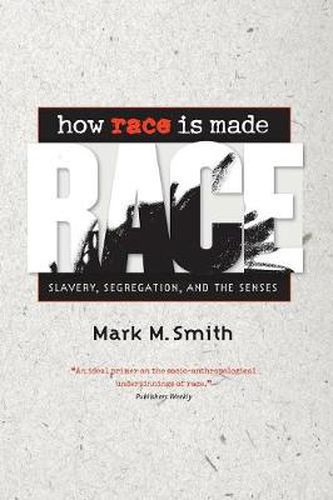Readings Newsletter
Become a Readings Member to make your shopping experience even easier.
Sign in or sign up for free!
You’re not far away from qualifying for FREE standard shipping within Australia
You’ve qualified for FREE standard shipping within Australia
The cart is loading…






This title shows how the five senses shaped southern racial stereotypes.For at least two centuries, argues Mark Smith, white southerners used all of their senses - not just their eyes - to construct racial difference and define race. His provocative analysis, extending from the colonial period to the mid-twentieth century, shows how whites of all classes used the artificial binary of black and white to justify slavery and erect the political, legal, and social structure of segregation.Based on painstaking research, How Race Is Made is a highly original, always frank, and often disturbing book. Sensory racial stereotypes were invented and irrational, but at every turn, Smith shows, these constructions of race, immune to logic, signified difference and perpetuated inequality. In order to come to terms with the South’s past and present, Smith says, we must explore the sensory dynamics underpinning the deeply emotional construction of race. How Race Is Made takes a bold step toward that understanding.
$9.00 standard shipping within Australia
FREE standard shipping within Australia for orders over $100.00
Express & International shipping calculated at checkout
This title shows how the five senses shaped southern racial stereotypes.For at least two centuries, argues Mark Smith, white southerners used all of their senses - not just their eyes - to construct racial difference and define race. His provocative analysis, extending from the colonial period to the mid-twentieth century, shows how whites of all classes used the artificial binary of black and white to justify slavery and erect the political, legal, and social structure of segregation.Based on painstaking research, How Race Is Made is a highly original, always frank, and often disturbing book. Sensory racial stereotypes were invented and irrational, but at every turn, Smith shows, these constructions of race, immune to logic, signified difference and perpetuated inequality. In order to come to terms with the South’s past and present, Smith says, we must explore the sensory dynamics underpinning the deeply emotional construction of race. How Race Is Made takes a bold step toward that understanding.